The Falconeer (Xbox One) Review – Earn Your Wings
What could be cooler than taking to the skies piloting your own massive eagle? It’s been the dream of a fair few kids including myself, ever since Disney’s The Rescuers Down Under had little Cody flying high on Marahute. Well, I can tell you one thing is cooler, and that’s strapping armaments to that same massive hawk and going into battle, that’s what. And another thing, setting it all on Waterworld!
The Falconeer is an open-sea aerial combat game where you fly your very own Warbird on missions for your House Island, be that simple errands, scouting forays, or full on warfare. The world is ocean from one side of the nautical map to the other, dotted with islands run by warring factions, all vying for control of resources and political sway on the Ursee. But is it fully-fledged, or is it a fledgling nosedive?
Quick Disclaimer: Now I know what you’re thinking, Eagle? Hawk? Surely it’s just falcons, right? Well, Falconry in the real world can be done with any raptor bird of prey, be that Eagle, Falcon or Hawk, and in the game the bird species is never really named. Instead they just use the term Warbird. So I will try to keep to Warbird, but if eagle sneaks in every now and then, don’t worry, they look like eagles, and they aren’t necessarily falcons.
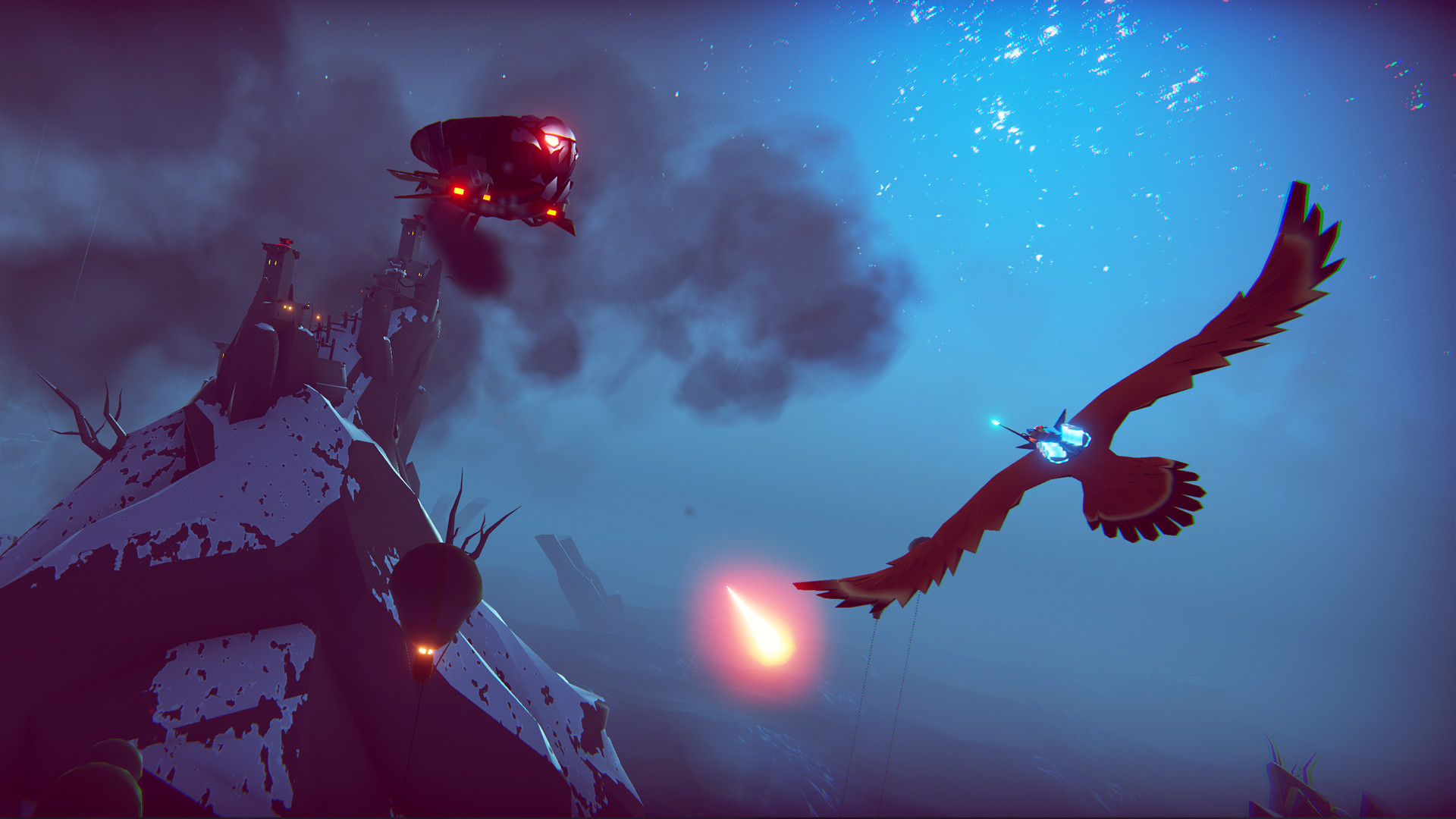
The story of the Falconeer is split into four chapters (and a prologue and epilogue) representing four different factions (or Houses) of the Ursee, a planet-spanning ocean as far as the eye can see, as far as you can travel in any direction. You start by picking from a lineup of generic faces and names that you assume will be your character for the rest of the game – and completing a quick prologue. You’re a young privateer being put through their paces to join the elite Falconeer force protecting the Empress. But just as you finish your tests the Imperial Tower is attacked and the Empress’ flag-airship is shot down.
From here the game’s story and structure becomes very different. Chapter one through four are the lead up to that prologue, and each one involves you once again picking a new face and name and then working for a particular House or faction for ten missions.
The first chapter places your Falconeer in Dunkle, a provincial backwater all but forgotten on the edge of the Empire and has you dealing with pirates, back-stabbing deals and political alliances shifting between islands. You can duck out at any time, and choose a different face and name, and carry on from the same point. Your Falconeer can be anyone at anytime.
Chapter Two has a new you working for House Mercius, an ally of the Imperium but left to fend for themselves by the Mancer Order (the baddies), and to deal with freebooter threats on their borders. By the end of this one you’re dealing with electric eels, flying manta rays, and monstrous crustaceans the size of islands. Chapter Three has another new you working for House Borgia trying to win a stay of execution from the all-controlling Mancer Order and get them to stand down, and Chapter Four has you actually working for the Mancer Order itself, as yet again another new character. And Chapter Five is a single mission epilogue to cap off the story.
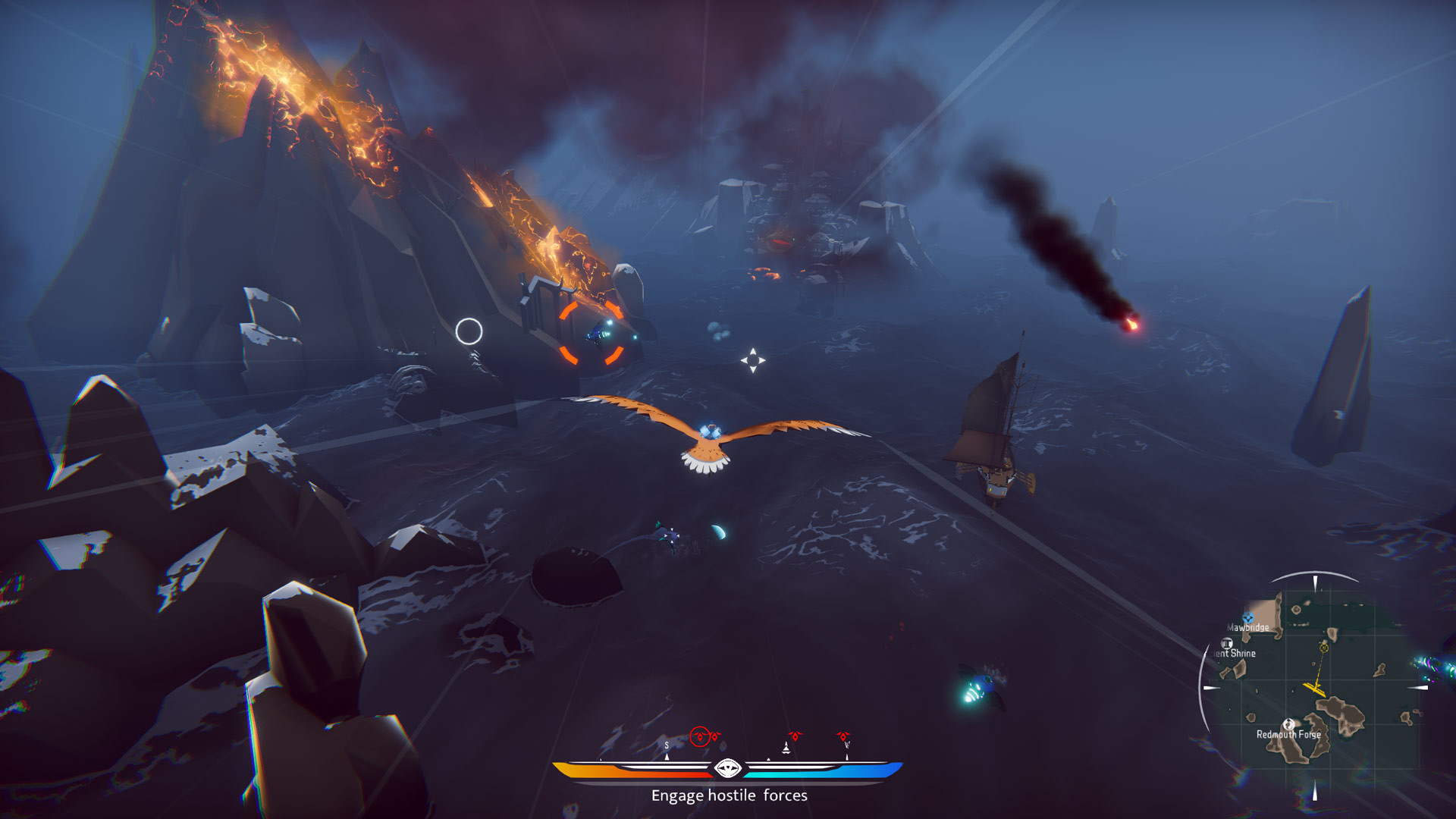
It’s a story of factional warfare, double-crosses and power-grabs which is plenty interesting. What it isn’t is a character driven story, because your Falconeer never speaks and makes no impact on events beyond piloting the missions. They could be anyone, and if you quit out and choose a different face, they really are anyone.
The narrative of the Falconeer is made very impersonal by this because your cookie-cutter character skin has no real personality of their own. Pick a name and a face, and off you go – you’ll never see them beyond a windowed view. Same with your Warbird, no name here either. This means that there is no meaningful or impactful backstory to your avatar other than simply a privateer working for their House.
It’s more like a career mode where you are the commander of a hangar of Falconeers than it is a story about an individual Falconeer. Which is really strange considering the title. Where’s the story of the up-and-coming Warbird pilot recruit and his best-friend from flight school and wingmate, both of whom are far too rebellious for their own good. Jettisoned from flight school in disgrace, they are forced to work with one faction after another, eventually at the end of each chapter forced to start again with a new House, and keep their names quiet. Where is the Villain, clearly the father of the protagonist and general of the evil Mancer Order, and why is he not taking the Empress hostage? In short where is the Falconeer, of the Falconeer? The game lacks a protagonist to hang all this great content from.
For some all this means is it’s your own story, and no character and their annoying habits can get in the way of you feeling like you are the Falconeer, and it’s your career. The avatar is so minimal that you could just pretend it’s the same person all the way through. But I found this to be a really missed opportunity in a game that has created such an epic world, not to fill it with great characters.

The world of Ursee is a really interesting place, full of dangers and interesting lore, unique locations, shifting alliances, religions, factions, politics and pirates. The interesting politics underlying most of the interactions and missions was one of the things that drew me in the most. There are hidden secrets, monsters that appear during the story, and it’s all exceptionally atmospheric. It’s a shame then that what you actually get up to in the world can be a little generic.
When you land your Warbird at a town island in the Ursee, shops and quest givers are all represented as a menu screen where you can cycle through their faces, requests, and wares, and deal with everything all in one place. Some will not be available immediately and will require that you buy permits before they will open up and offer you the more lucrative jobs.
But these missions are pretty derivative, consisting of escort missions for the most part (and you’ll be glad of a ship to escort offering extra firepower) and sometimes a slightly more interesting battle/invasion, it’s still a lot of deliver-this, recover-this-lost-thing, or attack-this. Considering the depth of lore in the world of Ursee, the quest design is disappointingly shallow.
Stranger still is progress. You can dip in and out of chapters, and work for these factions in any order, but each chapter is progressively harder than the last, so you’ll actually need to work through them basically in order – you’ll need the money and upgrades. So what’s the point? Then the real killer – what you keep from chapter to chapter. You can keep your money, and your level when you move from one chapter, one faction, to the next, but if you happen to have bought a new Warbird (of which there are six to buy) you can’t take them with you to the next chapter. New birds give improved stats and are pretty expensive, but you need to rebuy them in each new chapter.
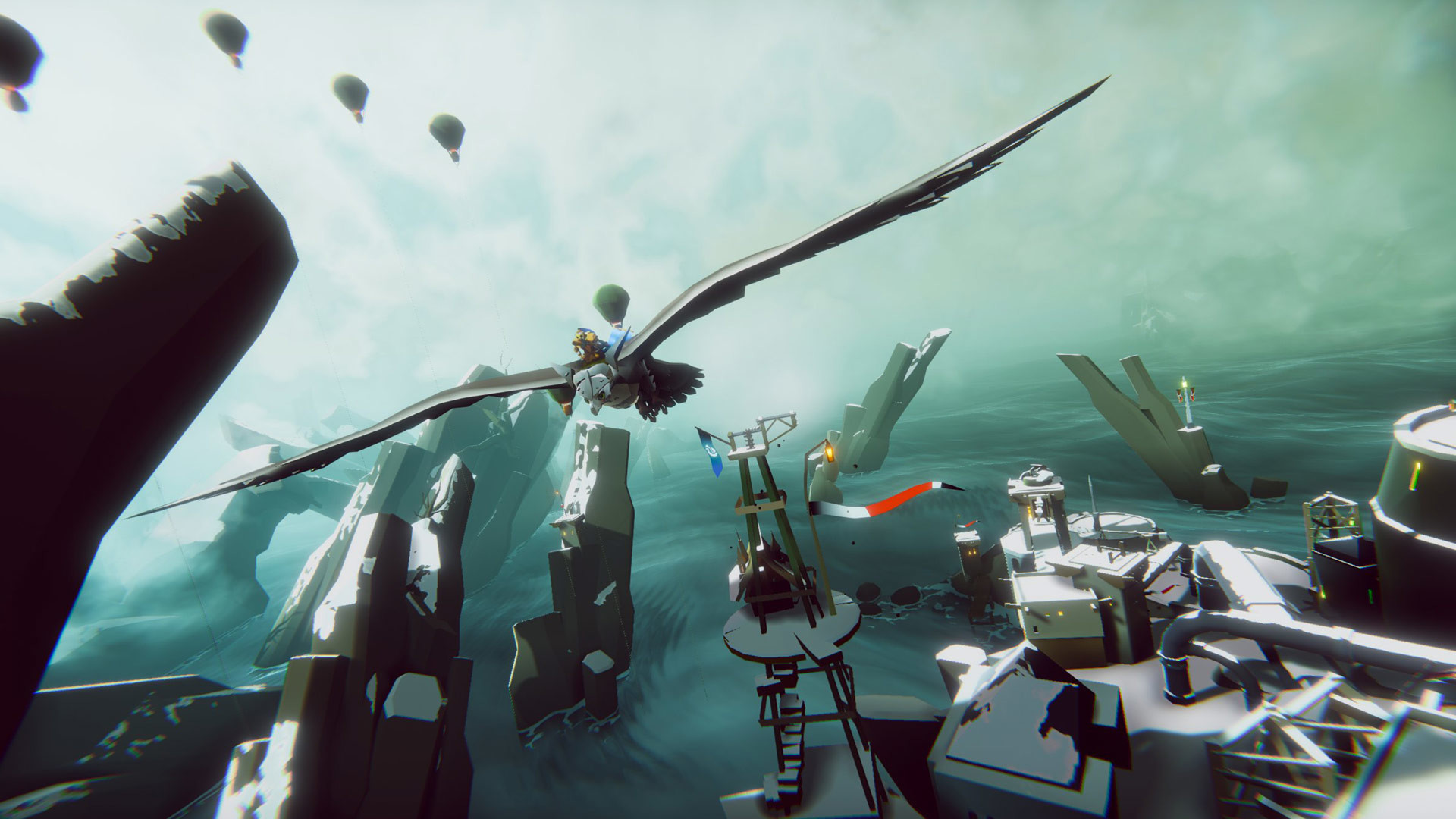
Stranger still, each chapter is just the same world all over again, just with a new island to call home. Everywhere you’ve been, permits and weapon upgrades carry across from one to another. So, why not the Warbirds?
I can’t for the life of me work out the purpose behind this mechanic. Why not just give me one pilot I stay with throughout the story and go from chapter to chapter with? They can be a privateer, and could work for anyone? Why not allow me to keep the birds I have bought? – it makes just as much sense as keeping the weaponry I’ve earnt. Why curtail progress like this? Losing your bird each chapter disincentivizes you to progress the story, and it incentivises you to complete the next chapters without buying a new bird because it’s a waste of money. Money that could be better spent saving up and buying one of the guns or the permanent chant buffs, that you can keep into the next chapter.
Death also comes at a cost. You’ll be resurrected, but like Grand Theft Auto, you’ll be docked money for each revival. Early on this makes earning difficult, and again incentivizes strange behaviours like spending all your money as best you can before a big mission.
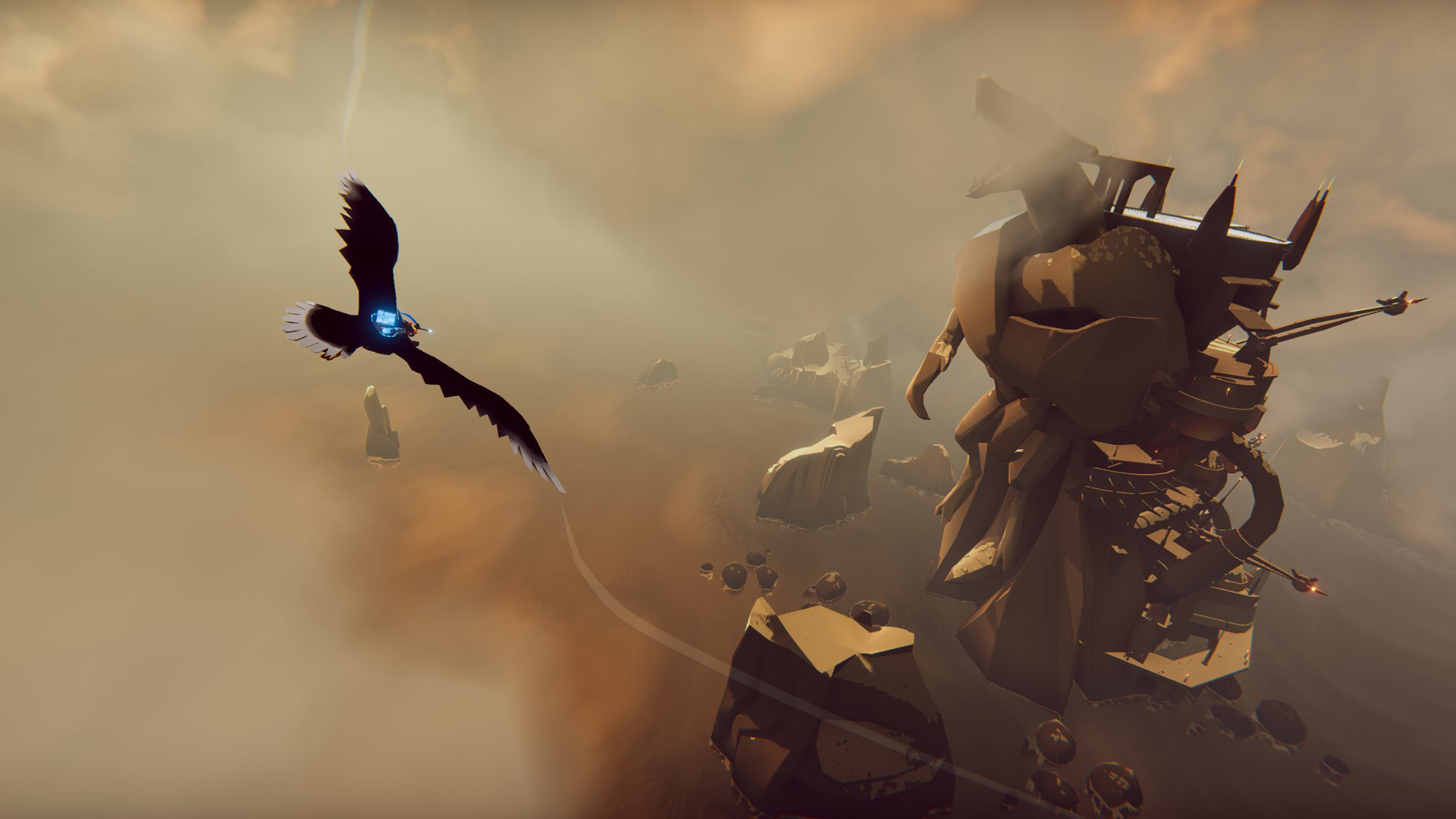
These odd design choices flow into a few other areas too, namely the world map. You’d imagine a large open-sea game would need a good map, and you’d be right. But that’s not what we get. The world map is really annoying and not very useful. Firstly there’s no button to just pull up the map, like there is on most open-world games. You must pause, flip to the map and give it a second to load. The map populates where you’ve been, but it’s more like a pirate’s nautical map than a videogame map. There are no question marks for things to investigate, only tiny markers for races to participate in, and worst of all there’s no cursor.
You are unable to set a waypoint on the map for you to then follow in free-flight, which left me kind of shocked. If I’m trying to get inside the developers head on this one, it could be tied to a desire to get you thinking more in compass directions, as the minimap also doesn’t shift as you fly – it maintains NEWS in their proper places. Considering the large open expanse, I think a waypoint function was almost essential to this game and I’m slightly dumbfounded there isn’t one. It’s actively working against you discovering things and finding your way to them.
There’s also no real fast travel option because you can’t select anything on the map, but instead, if the game knows its more than a certain number of fathoms in one direction to your objective, it will often give you the option to ‘fly ahead’, or ‘fly home’ which was appreciated.
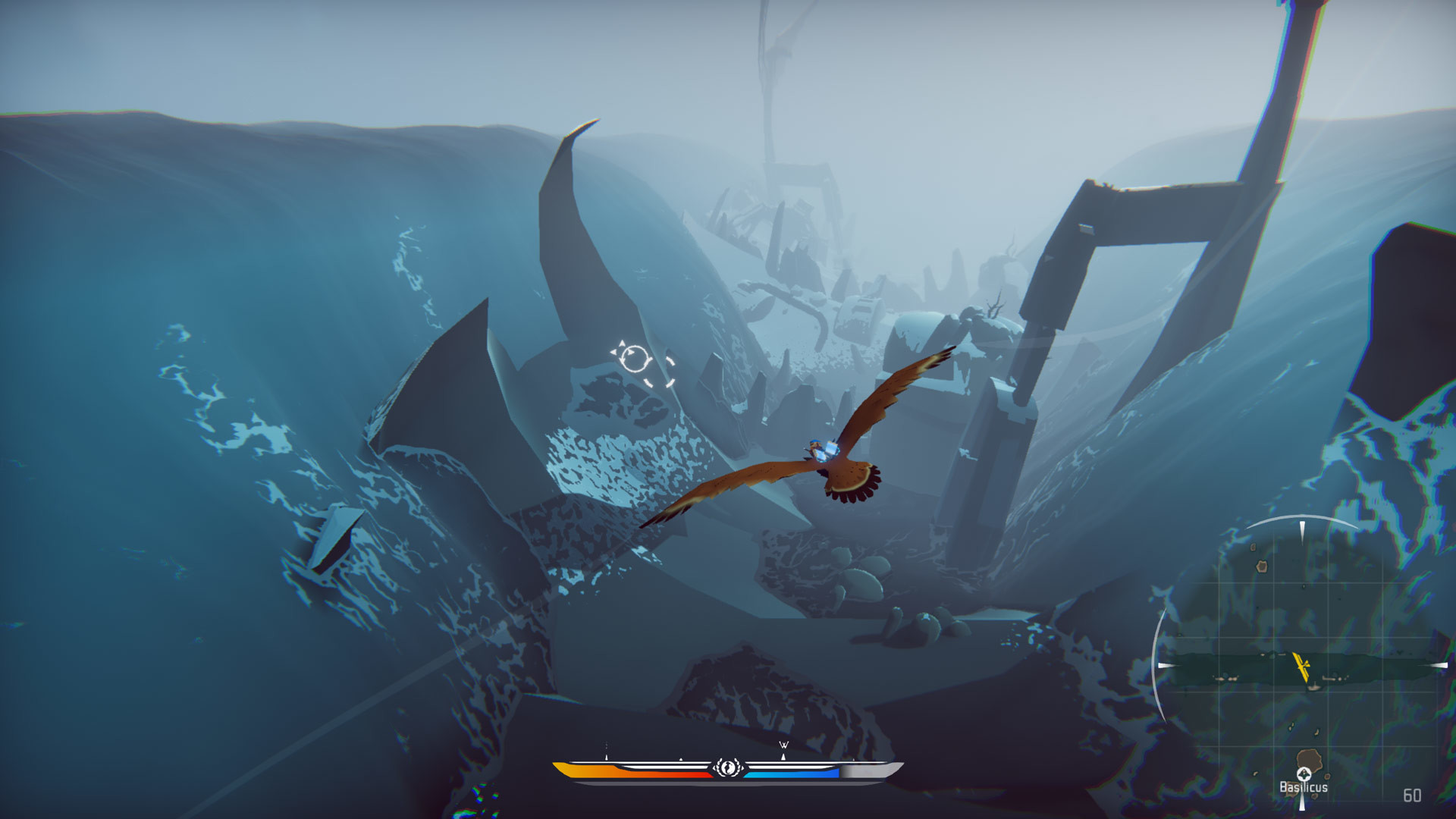
So, after all that how does it play? A game like this really has to have a perfect flying system, and for the most part that is what you’re getting with the Falconeer. Your Warbird feels natural, flaps to climb, sets its wings to dive or glide, and you can get very good at some nice smooth flight. There is an energy meter tied to diving and climbing, increasing as you dive and lowering as you flap and climb. This in turn can be used to speed boost or to perform aerial manoeuvres and evasive flying when the enemy birds come in.
In the thick of battle this can get to be a lot of fun, although there is an initial difficulty where it will seem that enemy birds, beetles, rays, dragons and eels are a lot more manoeuvrable and can literally fly rings around you. Battles sometimes devolve into spinning in a circle while you try to shoot down enemies, but I’d say this is more on you as a player. Change direction, pick off the smaller enemies first. There’s something of a lull in other enemy fire if you are actively hunting someone, and when you turn tail and run, you’ll get hammered. Generally you are encouraged to stay in the fight. Once you earn a few chants towards the middle of the game, such as a health boost for each kill, you will be a deadly predator in the skies.
While carrying a delivery your movement ability is constrained – you can’t airbrake, or roll or any of your usual commands, but a quick press of the R bumper and you can dump your delivery in the sea, fight off your aggressors and then dive into the sea and pick it up again.
When all is said and done, the flying in The Falconeer is top-notch and a lot of fun.

With the size of the Warbirds, enemies and islands, compared to the sea, its understandable that the graphics aren’t that high-grade. There’s some nice lighting, lush sunsets and such, but the actual moving parts are pretty low poly-count for this gen. There is also some popup on the Xbox One version which I assume would not occur on the nextgen versions, but for the most part is obscured by a lot of clouds and storms.
Music is an atmospheric treat of throaty warbling like a seaman playing a digeridoo, and lots of long drones and echoes. It’s a dark and lonely set of soundscapes, but it does a lot to create a sense of atmosphere. Voice work is good, but it’s of a very particular style that will sound really overdone. Lots of very thick sea-faring pirate accents, and very posh imperials, that just made my wife laugh while she was watching.
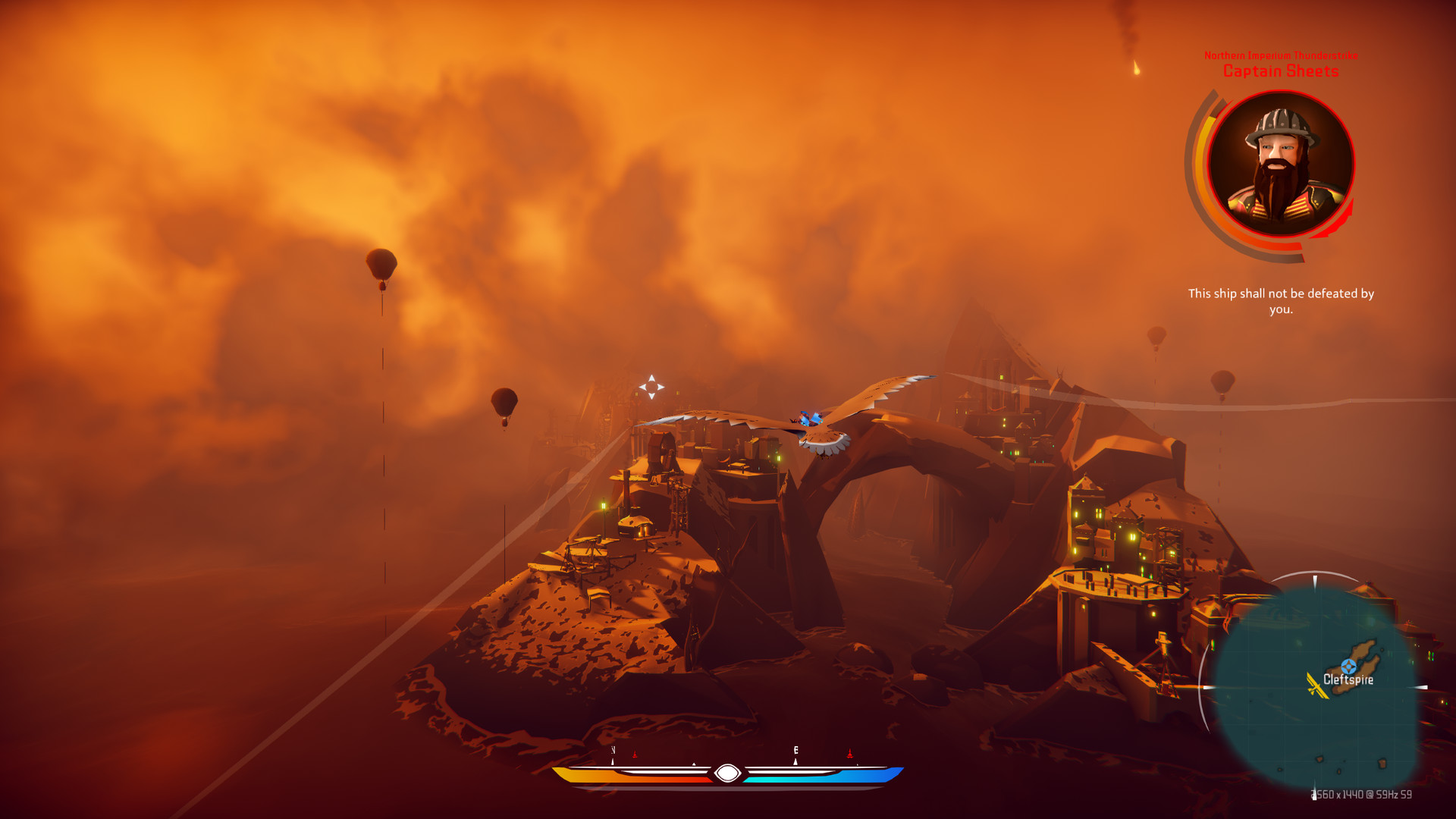
The Falconeer is a very cool and very different take on the open-world genre, perhaps even its own thing all-together – the open-sea adventure. It’s well worth your time, features some fantastic flight and aerial combat gameplay and a dark and twisting factional war narrative.
However it could have been so much more. Odd design choices and a deeply flawed chapter system dis-incentivizes you from progressing, and stops The Falconeer from being a classic. There could have been an epic story of a named character Falconeer challenging and harnessing the Ursee, and overthrowing the Mancer Order, had there been even half a protagonist to hang this around. Instead, it’s a beautiful world, but one without it’s heart.
The Falconeer lacks an actual Falconeer protagonist to hang its adventure from and ends up impersonal and fragmented. Odd dis-incentivizing design choices seek to undermine what is an otherwise wonderful lore-filled world and some of the most fun and frenetic aerial combat this generation.

The Falconeer is available on the 10th November on Xbox Series X and Series S, Xbox One (review platform), and PC via Steam.
Developer: Tomas Sala
Publisher: Wired Productions
Disclaimer: In order to complete this review, we were provided with a promotional copy of the game. For our full review policy, please go here.
If you enjoyed this article or any more of our content, please consider our Patreon.
Make sure to follow Finger Guns on our social channels –Twitter, Facebook, Twitch, Spotify or Apple Podcasts – to keep up to date on our news, reviews and features.
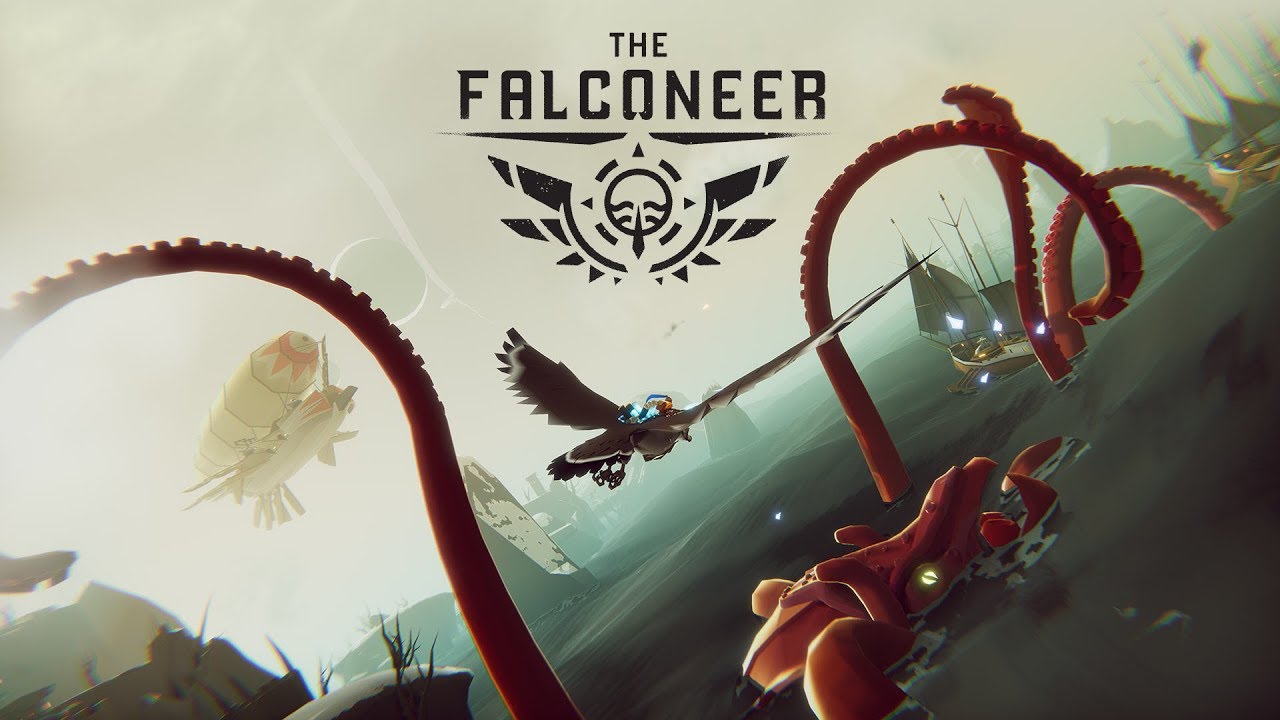



Pingback: r/Games – The Falconeer Review Thread | Flash News
Pingback: The Falconeer Evaluate Thread – Tech News Feed by Milkyweb Technologies